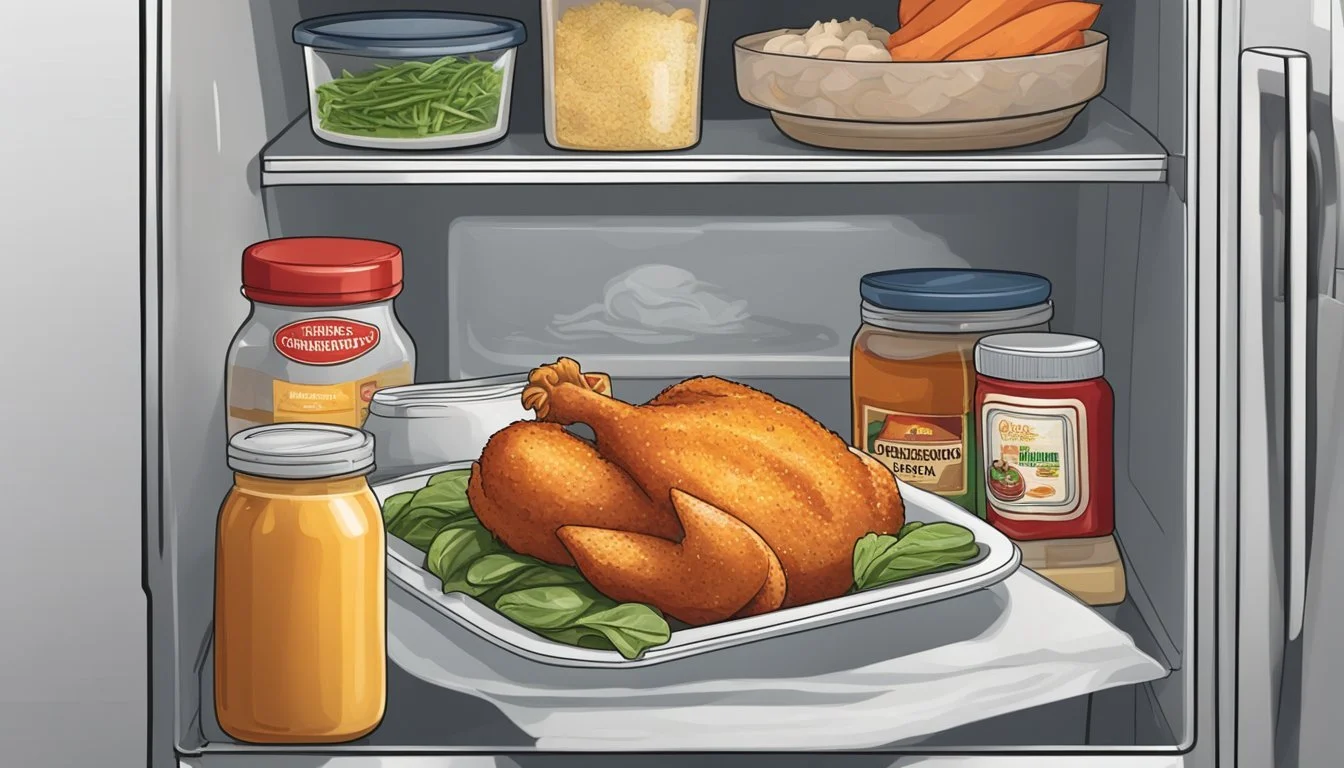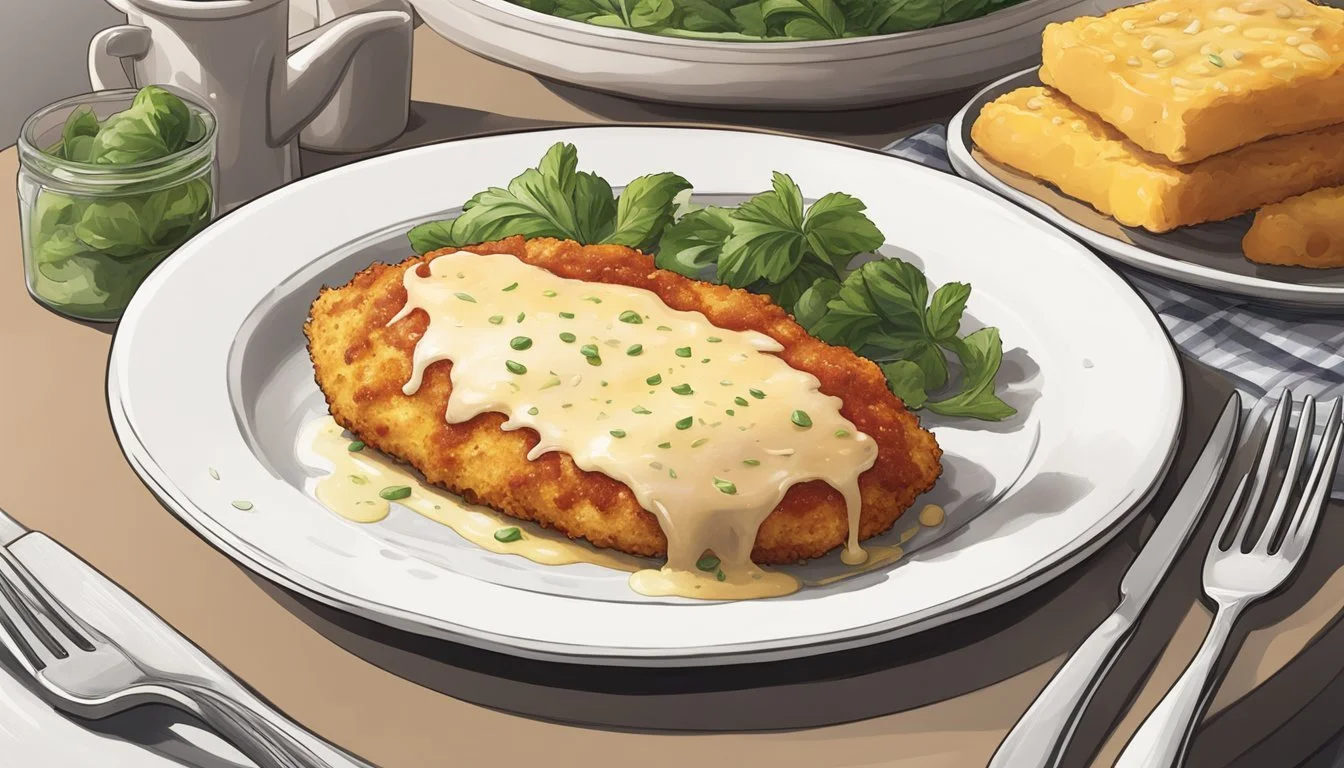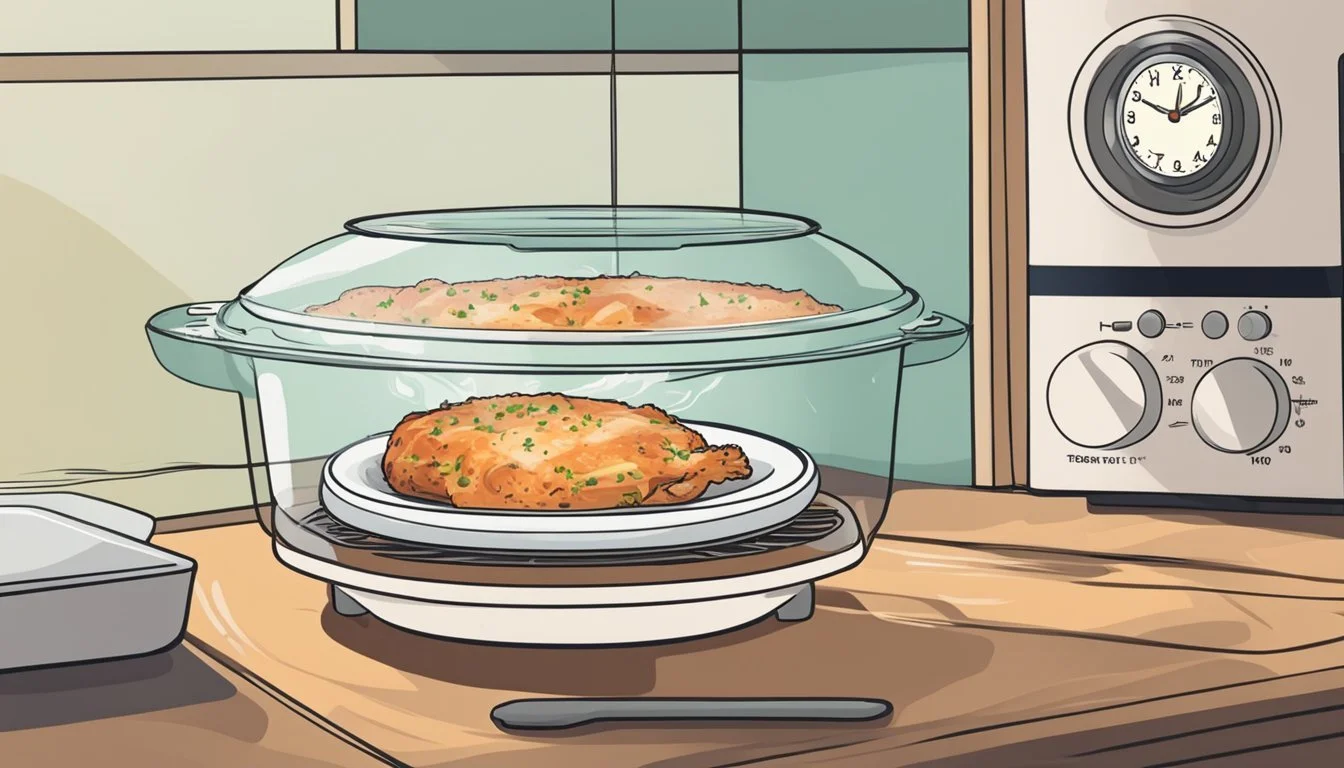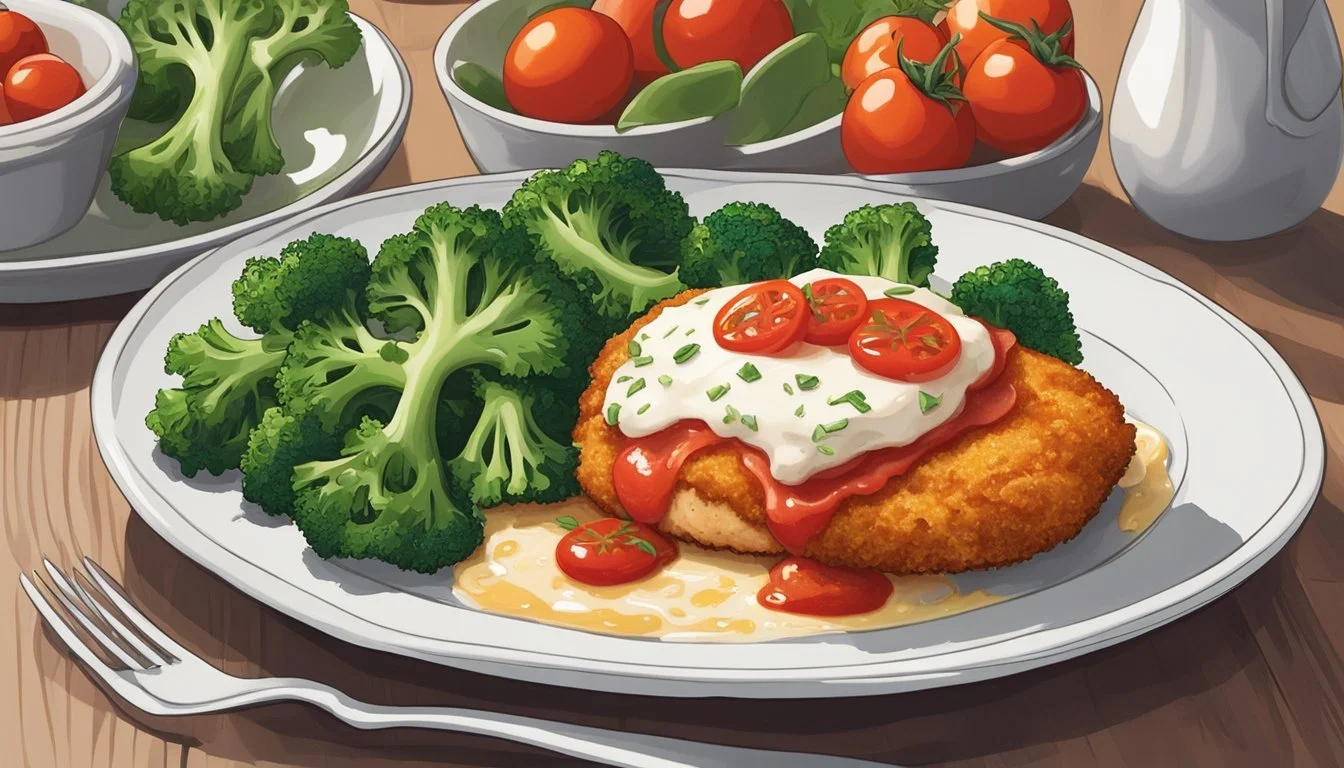How Long Does Chicken Parmesan (Non-Pasta Variant) Last?
Storage Tips and Shelf Life
Storing and preserving the flavors and quality of chicken parmesan, an iconic Italian-American dish, can be important for anyone who enjoys meal prepping or avoiding waste. Chicken parmesan can last in the refrigerator for up to 3-4 days when stored properly in an airtight container. This ensures it remains safe to eat and retains its delicious taste and texture.
For longer storage, consider freezing your baked chicken parmesan. When frozen, it can maintain its quality for up to 2-3 months. Ensure that it is well-wrapped to prevent freezer burn and to preserve its rich flavors. This approach can be especially useful for those preparing a healthy alternative, as it allows you to enjoy a nutritious meal even on the busiest days.
Knowing the shelf life of chicken parmesan is key to enjoying this dish at its best. Ensuring proper storage techniques will help maintain the dish's signature taste, whether it’s enjoyed fresh out of the oven or after some time in the freezer.
Understanding Chicken Parmesan
Chicken Parmesan, often known as chicken parmigiana or simply chicken parm, is a beloved dish recognized for its unique combination of flavors and versatility. It's characterized by breaded chicken breasts, marinara sauce, and melted cheese, making it a comfort food staple.
Origins and Popularity
Chicken Parmesan has its roots in Italian-American cuisine. It is inspired by the classic Italian dish "melanzane alla Parmigiana," which uses eggplant instead of chicken. This adaptation became popular in the United States in the mid-20th century. Over time, it has gained widespread popularity due to its hearty nature and straightforward preparation. Today, it is a fixture in many households and restaurants alike.
Key Ingredients
Key ingredients in a traditional chicken parmigiana include chicken breasts, breadcrumbs, marinara sauce, and mozzarella cheese. The chicken breasts are typically breaded and fried until golden brown. They are then topped with marinara sauce and cheese before being baked until the cheese is melted and bubbly. This combination of ingredients results in a savory, satisfying dish that is ready in about 30 minutes.
Traditional Recipe vs. Non-Pasta Variant
The traditional chicken Parmesan is often served with pasta on the side, but the non-pasta variant focuses solely on the chicken itself. By omitting pasta, the dish becomes simpler, catering to those who prefer fewer carbs or a lighter meal. This variant typically involves less mess and can be quicker to prepare. Chicken parm can be made using the same traditional method with breaded and fried chicken breasts, topped with marinara sauce and cheese, but without any accompanying pasta.
Storage Fundamentals
Proper storage of chicken parmesan ensures it maintains its quality and safety. Key practices include correct cooling and packaging, alongside the use of airtight containers in refrigeration.
Proper Cooling and Packaging
Chicken parmesan should be cooled promptly after cooking. Allow it to cool at room temperature for about 30 minutes. Do not leave it out for more than 2 hours to avoid bacterial growth.
Once cooled, wrap the chicken parmesan tightly in parchment paper to avoid direct exposure to air. This helps keep the moisture in and prevents freezer burn if you plan to freeze it. Proper packaging also includes double-wrapping with aluminum foil to enhance protection from air and moisture.
Airtight Containers and Refrigeration
Store chicken parmesan in an airtight container to maintain its freshness. This prevents contamination and slows down spoilage. Utilize containers that fit the size of the dish to minimize air space inside the container.
Place the container in the refrigerator where it remains at or below 40°F (4°C). The chicken parmesan can last in the fridge for up to four days. Label the container with the date of storage to keep track of its shelf life.
For longer storage, freeze the chicken parmesan in a freezer-safe airtight storage container. It can last up to three months in the freezer.
Shelf Life Considerations
Chicken Parmesan's shelf life depends on various factors including preparation, storage conditions, and presence of additional ingredients like fresh basil. Proper methods can maximize the dish's safety and flavor retention.
Freshness Factors
Freshness is influenced by both the quality of ingredients and storage conditions. Leftovers stored in the refrigerator should be checked for signs of spoilage, such as off-odor or visible mold.
Storage Tips:
Cool promptly: Ensure that the chicken Parmesan is cooled and placed in an airtight container within 2 hours of cooking.
Inspect Before Consuming: Always smell and visually inspect before reheating and consuming.
Common Spoilage Indicators:
Changes in texture (slimy or overly dry surface)
Off-odors
Visible mold growth
Refrigerated vs. Frozen Shelf Life
Storage methods significantly impact how long chicken Parmesan remains safe to eat. When stored at or below 40°F (4°C), it lasts up to 4 days in the refrigerator.
Refrigerated Shelf Life:
Airtight Containers: Use containers or heavy-duty aluminum foil to extend freshness.
Consumption Time: Aim to consume leftovers within 3 to 4 days.
Frozen Shelf Life:
Extended Duration: When properly frozen in airtight containers or freezer bags, chicken Parmesan can last 2 to 3 months.
Freezing Protocol: Ensure it is frozen promptly after cooling to maintain quality.
Reheating Tips: Thaw in the refrigerator before reheating for even heating and quality preservation.
Refer to these guidelines to ensure the best possible shelf life for your chicken Parmesan. Proper storage increases longevity and reduces the risk of foodborne illnesses.
Serving Suggestions
Chicken Parmesan can be paired with various sides that complement its rich flavors, enhancing the dining experience. These range from salads and vegetables to bread and alternative noodles.
Accompaniments for Chicken Parmesan
Salad: Arugula salad pairs well with Chicken Parmesan. Its peppery taste contrasts with the savory chicken, offering a refreshing element. Mix arugula with cherry tomatoes, shaved Parmesan, and a light vinaigrette for a balanced side.
Zucchini Noodles: For a low-carb option, serve chicken parmesan with zucchini noodles. They absorb the sauce well and add a mild flavor that doesn't compete with the main dish. Lightly sauté the zucchini noodles with garlic and olive oil.
Garlic Bread: A classic choice, garlic bread enhances the meal with its crunchy texture and robust garlic flavor. Toast baguette slices brushed with garlic butter and parsley in the oven until golden brown.
Safety and Health Considerations
Chicken Parmesan, when stored properly, can be both delicious and nutritious. It is essential to recognize signs of spoilage to ensure safe consumption and understand its nutritional aspects.
Recognizing Spoilage
To ensure safe consumption, one must look for specific spoilage signs. Off-odor is a primary indicator; if the chicken Parmesan smells sour or unusual, it should not be consumed.
Another telltale sign is visible mold. Any form of discoloration or mold growth means the dish is unsafe to eat. It's also important to note texture changes; slimy or sticky chicken is a clear sign of spoilage. Always store chicken Parmesan in an airtight container and keep it refrigerated for up to four days.
Nutritional Aspects
Chicken Parmesan can be a healthy alternative when prepared with minimal saturated fat. Using whole wheat flour for breading and baking instead of frying can reduce unnecessary calories.
Saturated fat, found in cheese and certain oils, should be kept to a minimum. Opting for low-fat cheese or using less cheese can make the dish healthier. Pairing the chicken with vegetables or a light salad can provide a more balanced meal. It's important to keep an eye on portion sizes to maintain a balanced diet.
Reheating Instructions
When reheating Chicken Parmesan, maintaining its crispy texture is paramount. The oven method ensures thorough heating and retains crispiness, while the microwave method offers convenience for quick results.
Oven Method
Preheat the oven to 350°F (175°C).
Place the Chicken Parmesan on a baking sheet or in an oven-safe dish.
Cover loosely with aluminum foil to prevent the cheese from burning.
Bake for 15-20 minutes or until the chicken is heated through and the cheese is melted. If desired, the foil can be removed in the last 5 minutes of baking to allow the cheese to crisp up.
Use a meat thermometer to ensure the internal temperature reaches at least 165°F (74°C) for safety.
Microwave Method
Place the Chicken Parmesan on a microwave-safe plate.
Cover with a microwave-safe lid or another plate to maintain moisture.
Heat on medium power for 1-2 minutes.
Check and stir if possible, then continue heating in 30-second intervals until the chicken is warmed through.
Allow to rest for a minute before serving to let the heat distribute evenly.
For the best results, avoid using the microwave for longer than necessary to prevent the chicken from drying out and losing its texture.
Variations and Substitutions
There are numerous ways to change up your chicken Parmesan recipe, from using different ingredients to serving it in innovative ways. These variations can cater to different dietary preferences and tastes.
Alternative Ingredients
Eggplant Parmesan is a popular substitution for chicken, making it suitable for vegetarians. Instead of chicken, use sliced eggplant that is breaded and baked or fried.
Crispy Breadcrumbs can be swapped with panko for an extra crispy texture, or with gluten-free breadcrumbs for a gluten-free option.
For the cheese component, mozzarella can be replaced with provolone or Gouda for a different flavor profile. Substitute Parmesan cheese with Pecorino Romano for a saltier kick.
Creative Serving Options
Chicken Parmesan doesn't always need to be served traditionally with spaghetti. Grilled asparagus, mashed potatoes, or even sautéed spinach can be served as sides.
For a lighter option, serve the chicken atop a bed of mixed greens with a light vinaigrette. Creating mini chicken Parmesan sliders using small buns and a slice of mozzarella is a great choice for parties.
Another innovative serving option is Chicken Parmesan sandwiches on crusty baguettes with marinara sauce and melted cheese.









